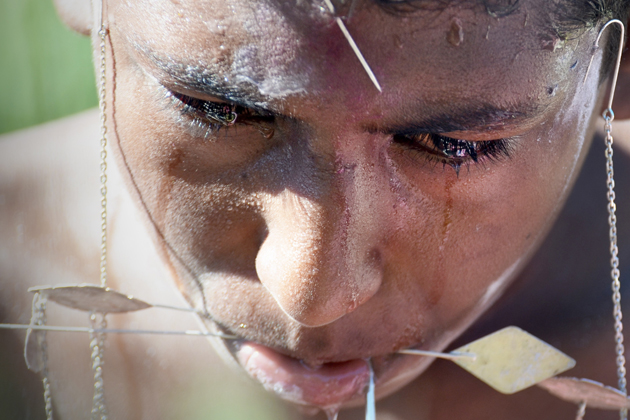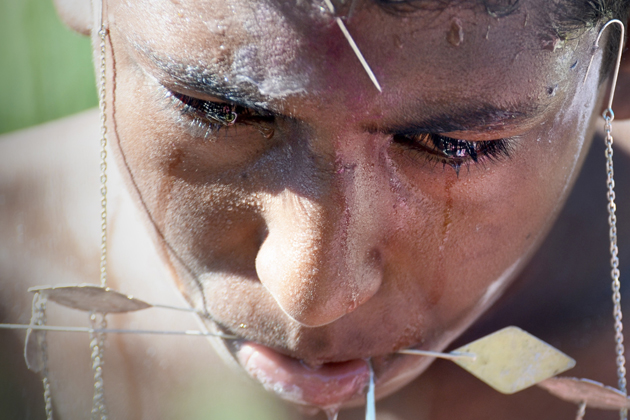The Puzzle of Extreme Rituals, is a class and stream of research at the University of Connecticut, as led by anthropology scholar Dimitrios Xygalatas. He investigates ‘high-intensity’ rituals, that involve physical harm and endurance. He has done ethnography work in places from southern Europe to the island nation of Mauritius in the Indian Ocean.
He has watched fire-walking rituals in Spain and Greece. He’s seen Mauritius inhabitants conduct extreme body piercing and mutilation in Hindu religious festivals
“I was always fascinated by extreme, high intensity rituals, because they are so puzzling,” he says. “I asked myself why do people engage in these really painful or dysphoric or even dangerous activities. For as long as we have studied human civilization, societies have performed rituals which at first sight don’t really seem to have a function, and yet they are passed down from generation to generation.”
He observes that rituals that are high-intensity tend to bond people more intensely as well.
“What we saw is what we had predicted,” Xygalatas says. “Those who performed high intensity rituals, as well as their families and friends who observed them, gave over twice as much as those who performed a low arousal ritual. They, in turn, gave more than those who performed no ritual. When we asked high arousal participants how intense the pain was, we saw a direct correlation between how painful the ritual experience was and how much they donated.”
While studies continue, these results support the hypothesis that pain resulting from voluntary ritual participation creates communal bonds. Whether the response to painful stimuli by those most affected is somehow tied to altruism hasn’t been determined. However, a clue from neuroscience suggests that as rituals become more arousing, they may trigger hormones that stimulate reward systems in the brain, thus transforming what initially may be a painful experience into a pleasurable one. This, in turn, may be what triggers other behaviors such as charity or feelings of community.
In other rituals, like fire-walking, the physical intensity actually synchronizes the participants and their close circle. Their heart beats sync up and they become physically united.
In the village of San Pedro Manrique in Spain, Xygalatas and his fellow researchers used heart rate monitors on performers and spectators at a fire walking ceremony to record levels of physiological arousal.
“We chose this ceremony because the people who fire walk there do so one after another, not in synchrony, says Xygalatas. “This allowed us to separate the effects of ritual structure itself from the effects of synchronous movements, which are known to produce interpersonal rapport. We also had observers present, both from the village and from outside the community. We wanted to find out what happens when people share an experience.”
The results revealed that heart rates of the fire walkers and their relatives and friends from the village rose and fell almost in unison before, during, and after the ceremony. The heart rates of visiting spectators did not. This lent credence to the observation of Xygalatas and others that ritual experiences serve to develop strong emotional bonds among participants and those who are closest to them.
“The synchrony effect was so strong,” he says, “that we were actually able to predict people’s social proximity based on the level of physiological arousal, and vice versa.”

